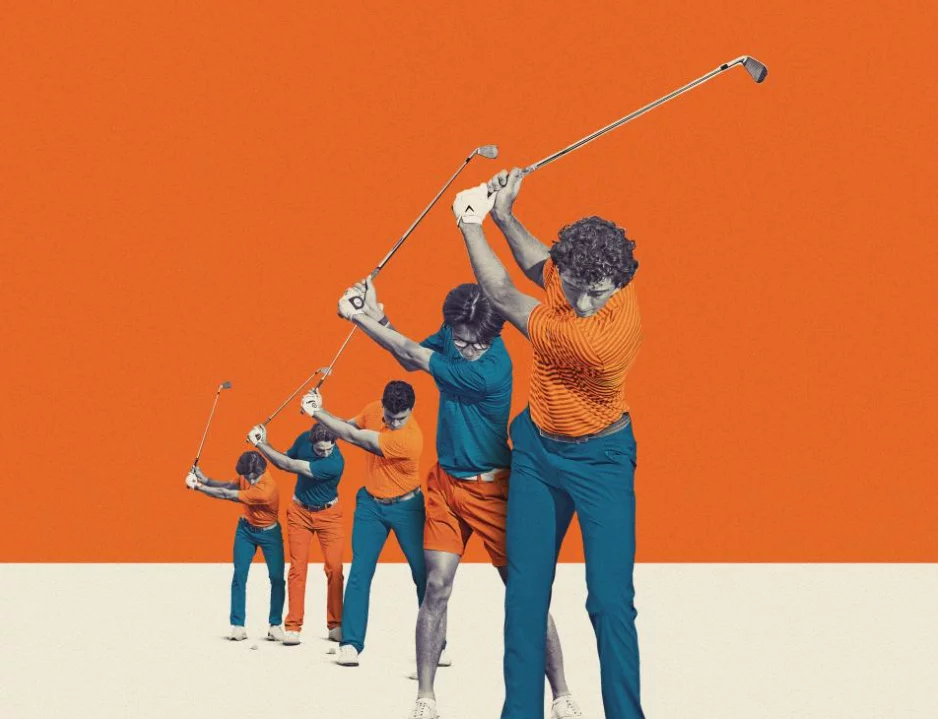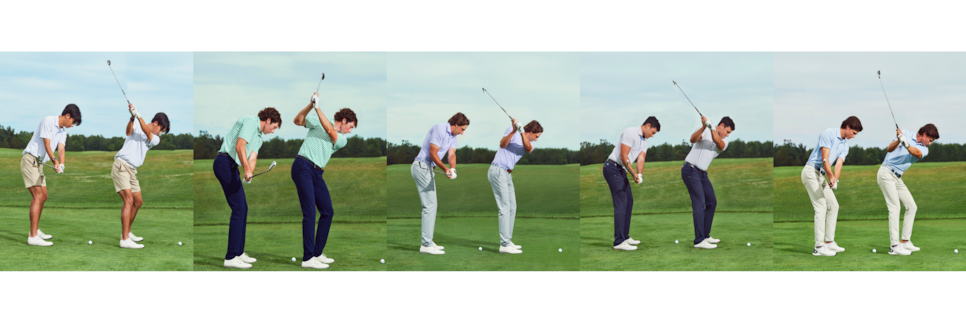LOOK AT TONY FINAU’S SWING—and Xander Schauffele’s, Brooks Koepka’s, Rory McIlroy’s and Jon Rahm’s—and two things should immediately strike you. First, they’re all tremendous ball-strikers and great players. Second, they all have noticeably different backswings in terms of length and path. So if you were looking for an “ideal” backswing to copy from these examples, which one should you pick? And does that mean all the other tour players are doing it wrong?
The answer is, there’s no such thing as an ideal backswing length or position; there’s only the one that works best for you. You’re probably going to look different from Tony, Rory, Brooks, etc., and different from friends in your foursome—and that’s OK as long as it matches your grip, your natural build and your level of flexibility.
Along with talented swing coach Terry Rowles, I’ve brought together five of our top students to show you the most common grip/backswing combinations in golf, so you can identify the one that is most similar to yours. Once you know that, we’ll show you how to work on your particular combination to make it better. Edmund, Alex, Nick, Brad and Danny (from left to right with me below) are terrific players who shoot under par and have more than 120 miles per hour of clubhead speed with the driver, but you will see that they have different backswings.
It starts with the way they hold the club. You can think of the position of your right (or trail) hand on the club as a kind of steering wheel for the backswing. Where that hand sits on the handle—to the side of it, under it or on top of it—strongly influences the route the club takes in the backswing. The route of your actual backswing has to match the route it wants to take based on where that trail hand rests on the handle of the club.
Once you’ve established the route the club should take, figuring out the amount of backswing is simple—it’s based on the thickness of your chest and how flexible you are. Let’s establish it right now: Hop up, get into your golf posture and swing your left (or lead) arm like you were making your normal backswing, keeping it relatively straight and using your normal hip turn. When that left arm can’t go back any farther, reach up and join your right hand to your left. That’s your ideal backswing length.
You might have been told to get wider or to stretch your backswing. That’s not necessarily bad advice, but trying to extend your backswing longer than your level of flexibility or body type comfortably allows could pitch your weight toward the target. That creates downswing issues that negate any increased speed you might be generating with a longer move. Besides, many good players can bomb it without reaching parallel at the top.
So what’s your ideal backswing? Start by matching your grip style to one of these players here. —With Matthew Rudy
Nicholas (Nick) Li will be playing in his senior season on the golf team at Trinity College in Hartford, Conn., this fall. He can really crank it off the tee with a swing speed up to 130 mph.
Of the grip/backswing combinations in this article, Nick’s looks the most classic. But as you’ll soon discover, trying to add some of what Nick does into the swings of the other guys would ruin them!
Danny Harcourt played golf at Gettysburg (Pa.) College and was the first two-time All-American in the program’s history.
If we tried to teach Danny to grip and swing more like Nick, it would rob him of his natural ability. It would cause him to have to swing the club differently than he does and would destroy his sequencing.
Original article by Mike Adams on GolfDigest







